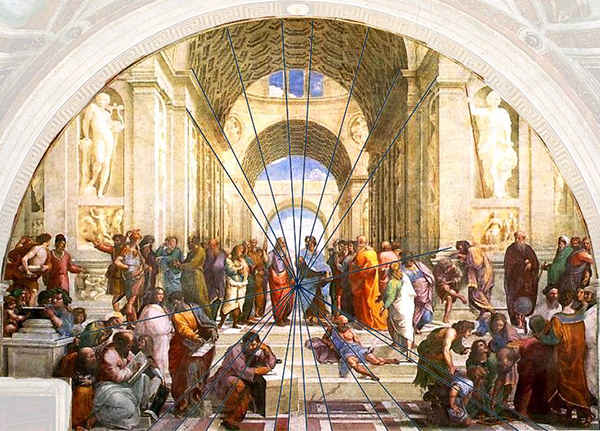Why did artists of the renaissance rely on mathematical formulas?
Unlocking the Renaissance: The Role of Mathematical Formulas in Art

During the Renaissance, artists delved into the realms of mathematics to elevate their craft to new heights. This marriage of art and science wasn’t merely a stylistic choice; it was a revolution that fundamentally transformed the way artists perceived and depicted the world around them.
Let’s explore why Renaissance artists leaned heavily on mathematical formulas and how this synergy shaped the era’s artistic masterpieces.
Dimensional Illusions
Renaissance artists yearned to capture the essence of depth and realism in their works. Through the ingenious application of mathematical principles like linear perspective, they transcended the limitations of the canvas, rendering three-dimensional scenes on a flat surface.
By strategically placing vanishing points and employing orthogonal lines, artists conjured illusions of depth, enabling them to portray reality with astonishing accuracy.
Harmonious Proportions
Central to the quest for lifelike representations was a deep understanding of proportions and anatomy. Artists delved into mathematical concepts – example: the golden ratio and classical ideal proportions, ensuring that their figures exuded harmony and balance.
This meticulous attention to detail allowed for the creation of anatomically precise human forms, captivating viewers with their realism and grace.
Artistic Composition
Mathematics also served as a guiding light in the composition of Renaissance artworks. Artists wielded principles of symmetry, balance, and geometry to craft visually captivating compositions.
By orchestrating elements within the frame according to mathematical precepts, artists drew the viewer’s gaze to focal points, evoking a profound sense of harmony and unity within their works.
Precision and Craftsmanship
Renaissance artists were not just creatives but also consummate craftsmen. They relied on mathematical formulas to attain unparalleled precision in their craft, whether in pigment mixing, architectural design, or intricate detailing.
Mathematics provided a framework for achieving technical excellence, ensuring consistency and accuracy in every stroke and structure.
Layers of Symbolism
Mathematics wasn’t merely a tool; it held symbolic significance in Renaissance art, embodying notions of order, harmony, and divine proportion. Artists infused their works with mathematical symbols and allegorical references, enriching them with deeper layers of meaning.
Through this integration of mathematical symbolism, artworks transcended the visual realm, resonating with intellectual and spiritual depth.
Facts

Leonardo da Vinci, the epitome of Renaissance brilliance, seamlessly bridged the worlds of art and mathematics. His notebooks, teeming with sketches and mathematical musings, attest to his multifaceted genius.
The advent of mathematical perspective revolutionized art, enabling artists to craft immersive and realistic portrayals of their surroundings.
Renaissance architects like Filippo Brunelleschi epitomized the fusion of art and science, employing mathematical principles to conceive groundbreaking architectural marvels.
The allure of the golden ratio captivated Renaissance minds, permeating art and architecture with its divine allure. Its presence in iconic works – example: da Vinci’s “Vitruvian Man” and Michelangelo’s “The Creation of Adam” speaks to its enduring influence on the era’s artistic landscape.
In essence, the Renaissance was more than a cultural rebirth; it was a mathematical odyssey that forever reshaped the canvas of human creativity.












